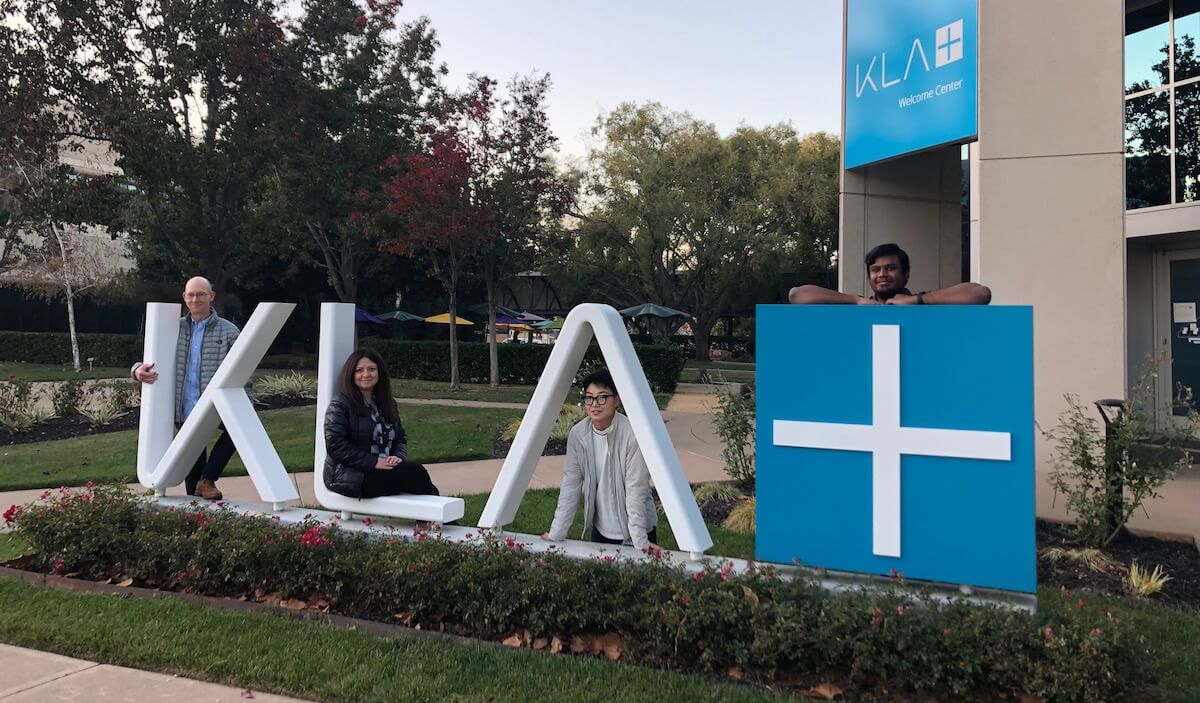A Conversation with KLA’s Lena Nicolaides
2021 was a big year for the semiconductor industry, and 2022 is expected to be even bigger. Ironically, despite the mayhem it caused, the chip shortage and its impact on the global supply chain turned out to be the best advertising we could have hoped for in our industry. When those of us who work in the semiconductor industry once lived in relative obscurity, the whole world now knows how important semiconductors are to our everyday lives.
Semiconductor manufacturers all over the world are gearing up to meet demand by building new fabs and adding capacity to existing ones. The downstream effect is impacting global equipment and materials suppliers, as they too expand facilities and open new ones to ensure a well-oiled supply chain. The entire semiconductor ecosystem is in a hiring frenzy to support all this activity.
Well before the pandemic, industry seers predicted a strain on the semiconductor workforce as more engineers and technologists approach retirement age. At the same time, many of those just entering the workforce with degrees in science, technology, engineering, and math (STEM) are being drawn to what appears to be hipper, sexier STEM-related career paths. They dream of being part of the metaverse: Facebook. Google. Amazon. They want to design cool apps, pursue careers in biotech, or renewable energy. How can we interest them in something as “boring” as manufacturing tools or materials that make semiconductor devices? They didn’t realize how cool it was to be part of the ecosystem that makes all these things possible. Until now.
Innovating a Talent Pipeline
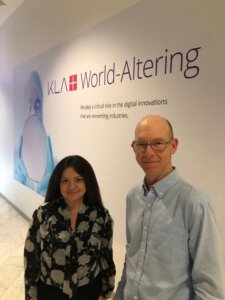
Where many people see challenges, Lena Nicolaides, Sr. VP and GM at KLA, sees opportunity. She is passionate about the semiconductor industry and the magic it makes happen. Early on in her role at KLA, Nicolaides spearheaded multiple efforts to promote STEM education. “We need innovators for the future,” she says. She’s made it her focus – leveraging her role at KLA – to inspire the next generation to not only pursue degrees in STEM but to parlay those degrees into careers in the semiconductor industry.
“Semiconductor CapEx is increasing at greater than 40% year-over-year growth. But without the talent nothing happens,” she said. “We need innovators, and a lot of them, for the future of the industry.”
As a company, KLA has always put a focus on talent, but now they are doubling down their efforts as the situation becomes even more critical. But it’s not enough to recruit new talent. How do you sustain it? How do you retain it? Nicolaides firmly believes the talent journey begins as early as elementary school.
“As we innovate for our tools, we innovate with our people,” she says. “These are the people who create our systems. Starting the education process in elementary schools allows us to build a talent pipeline for innovators of the future.”
She says it’s exciting to go into classrooms and explain how KLA is one of the companies that enable the acceleration of chip production to address the current shortage. Because it impacts consumers’ ability to purchase everyday goods like new cars and appliances, young children now understand how important computer chips are.
“Making semiconductor technology relevant to the home has given us a fantastic opportunity. We need to leverage that so that we can attract talent. When parents talk about how they can’t buy a car because of the chip shortage, it makes kids understand the importance of chips and want to work in the industry. We need to convey they can work on cool things like artificial intelligence (AI), and state-of-the-art optics and imaging technology. We need to show them how the industry can positively impact the environment by reducing energy use.”
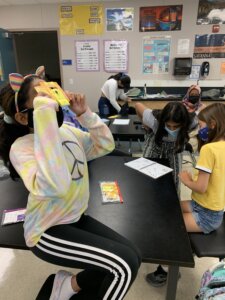
Nicolaides is especially proud of KLA’s STEM Inspectors program that kicked off in 2019, in partnership with Santa Clara Unified School, Santa Clara, Calif, to bring STEM into the classroom (Figure 2). Using a hands-on approach with 2µm paper microscopes, students acquire useful STEM skills while learning how electron microscopes are used in the semiconductor industry. The pilot was so successful, it was launched globally, and already 1000 students have participated in it.
The breadth of career paths that a degree in engineering can open up is not readily apparent or rarely discussed. That’s why, as part of the STEM Inspectors curriculum, students are introduced to the education paths and many career opportunities available in the semiconductor industry.
KLA supports multiple education programs and many of its employees invest their time to support and expand these programs. Examples include:
- Science is Elementary – KLA employees volunteer monthly to teach science modules to kindergarten students at Alexander Rose Elementary School in Milpitas.
- First Robotics – KLA Foundation sponsors over 20 high school robotics teams that compete in the annual FIRST Robotics Competition. Students learn how to design and build robots while developing critical collaboration skills.
- SEMI High Tech U – As a Global Partner, KLA Foundation supports HTU efforts in helping students understand education and career pathways that lead to high-tech fields.
One Person at a Time
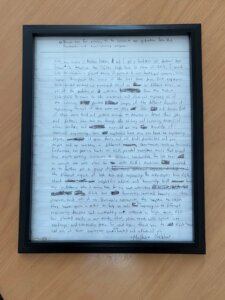
Figure 2: Nicolaides proudly displays this thank-you letter from SEMI High Tech U graduate, Madhav Nekkar, to remind her that even reaching one person makes the efforts worthwhile.
Nicolaides remembers when KLA first hosted a module of SEMI HTU and how satisfying it was to see the sparks of interest light up. This outreach program offers three-day experiences to high-school students who are interested in pursuing careers in STEM. The students participate in hands-on workshops and group challenges to learn about STEM-related fields. They visit manufacturing facilities, learn how to write a resume, and participate in mock interviews.
Madhav Nekkar, a freshman at Westmount High School, was so inspired by what he learned, he wrote a personal letter to Nicolaides expressing his gratitude to KLA for hosting the event in 2013. He went into detail describing the experience, and how it planted a seed to pursue a degree in STEM. She had his letter framed and it hangs on the wall in her office as a reminder that if you can reach just one person, the effort is worth it (Figure 3). Madhav graduated with a STEM degree and is now working in the industry.
The Gender Gap
Even with industry-wide initiatives underway, gender inequality continues to plague the semiconductor industry. According to a global survey of engineering students and career engineers, women tend to seek a career path in engineering later than men. A higher percentage of male engineers set out to become engineers while still in high school, while women decide as undergrads (Figure 4).
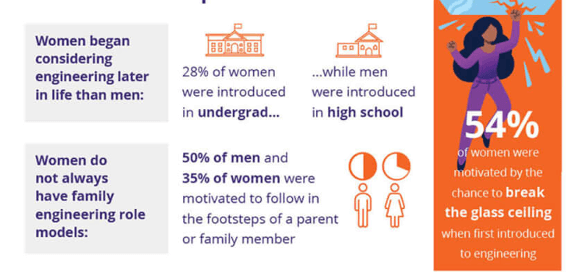
Again, Nicolaides believes the problem can be traced back to elementary-age children, who are generally given conventional gender-defined toys. Puzzles, train sets, and Legos are listed under “Boy’s Toys”, while dolls, toy kitchens, and Easy-Bake Ovens are listed as “Girls Toys”.
For its part, KLA works to create opportunities and increase long-term access to educational resources to support girls and under-represented communities throughout their unique journeys, including STEM fields. By supporting Taiwan Girls Camp, Habitat for Humanity, and Alliance 4 Girls, KLA provides resources for young girls and women to overcome the challenges of gender inequality.
Helping the gender gap at all levels within KLA, Nicolaides is the executive sponsor for the Women in STEM Empowered (WISE) employee resource group (ERG) that works to attract, advance, and provide more opportunities for women at KLA. WISE helps KLA’s employees grow and navigate their development path at KLA.
A Career Born out of Curiosity
“The curious mind will gravitate towards STEM,” says Nicolaides.
According to KLA’s Engineering Inspiration Report, engineers today are inspired by purpose and technology: Things like the digital era, sustainability, and social and societal issues (Figure 5).

Nicolaides often draws on her 20-year career in the industry, and specifically at KLA, to illustrate the wonder of the semiconductor industry. She says she’s never bored and continues to be inspired to innovate.
“Building these tools – inspectors that find these small, tiny things – it’s so fulfilling to see a tool go into production,” she says. “As engineers, we all have in common the desire to see our ideas come to fruition.”
She thinks many people underestimate how big engineering is and how many fields there are. People can start as engineers and go on to have a very diverse career path. For example, Nicolaides began as a research scientist and is now a general manager.
With a foundation in STEM, the semiconductor world is your oyster – from R&D, processes and technology, to operations, sales, support, and beyond. Do you want to travel the world? Work in cutting-edge technology? Move to marketing? Be a writer? Climb the corporate ladder? The semiconductor industry has it all.
“There is a role for every personality within our semiconductor industry,” says Nicolaides. “From engineers to marketing, to technicians, application engineers, human resources, corporate roles… tell me your degree, and there’s probably a job you can have.”
Sustaining and Retaining Talent
“How do we strengthen our talent? We enable them to grow from within,” says Nicolaides. “Retention starts from Day One.” She identified three keys to retention.
Open Communication
“Employees want to feel like they are part of something bigger,” notes Nicolaides. If they fully understand the mission and goals of their division and the outcome of their work, they have context and are more likely to stay with the company. Alternatively, companies who silo their employees to protect their IP, tend to see less commitment. And during the pandemic, more frequent communication was needed to enhance transparency and strengthen the team connections.
Ongoing Development
“It’s important to be at a company that develops you,” says Nicolaides.
At KLA, this means professional development, continuing education, and ERGs. For example, the WISE ERG holds regular events.
One recent panel discussion focused on how to navigate your development path at KLA. One employee talked about first working on the development of one inspector system, and then followed that with a role in the applications division, leveraging the knowledge gained during tool development. Another employee described their journey from engineering to a marketing role.
They also have an in-house learning center where new hires follow a standard curriculum and have access to a wide range of training courses as part of their KLA career path. Employees can take advantage of other enrichment programs and pursue master’s degrees.
Show Appreciation
The third element on the continuum of retention is to show appreciation. KLA regularly celebrates employee achievements. It’s the little things that go a long way. Appreciation is shown, with several award programs, at both individual and team levels. The pandemic further demonstrated the need for appreciation and connecting with team achievements.
“It’s about understanding the talent you have, and empowering the talent you have,” said Nicolaides. “That is how you inspire others to follow this path.”
Conclusion
From kindergarten to a career at KLA, inspiring the innovators of the future is a lengthy and complex journey. But industry leaders like Nicolaides understand that it’s worth every step. The key to success is to keep looking ahead.
This article is abridged from the 2022 3D InCites Yearbook. To view additional photos and read the sidebar, “The Great Resignation, click here.



